The timetable for April’s operating session was amended yesterday with doodlebug 26 working trains 3 and 4. This gives the operator at San Fernandez more to do because No.26 will need to be turned and run round its train on arrival at Veinte Veinte.

In additional to this a direct (not via Grande) service will run from Cuarto to San Fernandez and back. Trains 101 and 102 will need to be either a double ended railcar or two singles coupled back to back so the driver can change ends at Paño Cucina. This service is not something I’d thought much about but the guest operator at the March session routed a dispatcher’s extra this way using railcar 305.

Train 3 from Grande to San Fernandez and train 102 from San Fernandez to Cuarto pass each other between San Fernandez Junction and Casablanca. In theory the northbound train has priority but in practice whichever arrives first will have to stop and wait. Train 3 is routed via the main and train 102 takes the siding.
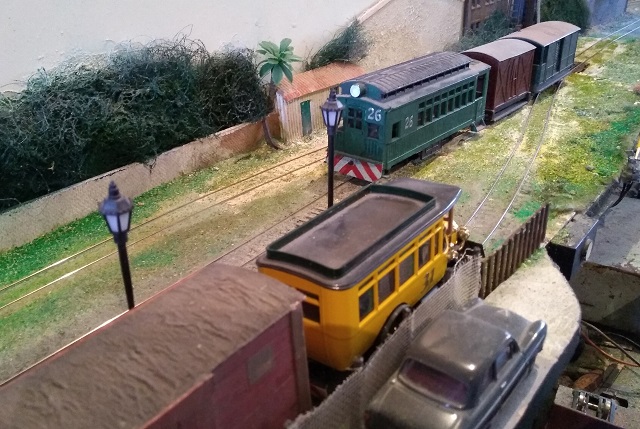
It occurred to me late last night that the doodlebug’s trains would look better running mixed (mail, freight and passenger). By the time train 3 arrives at San Fernandez the railcar and trailer to work train 6 will have been stood in the bay platform for most of the day.

It makes sense to assume train 6 has been already been loaded and is ready to depart. Train 3’s vans, on the other hand, will need unloading before they can be returned to Grande.
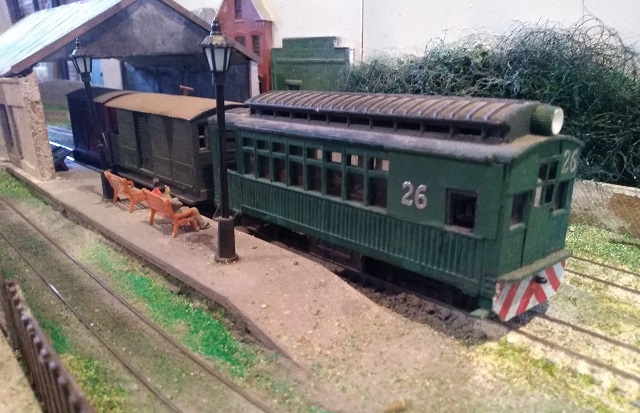
Thus train 4 becomes the last southbound service of the day.

As well as having trains 4 and 6 switched round, and the new Cuarto – San Fernandez direct trains added, the timetable diagram has been flipped so north is now at the top for both the San Fernandez and Cuarto lines. Convention has it things are that way up so it makes the diagram easier to follow.

Train 6 will have turned, visited the goods shed and stabled in the carriage shed by the time train 4 gets to Grande.

The station pilot will deal with the incoming vans, ensuring they are spotted in the right order at the goods shed so train 1’s loco can collect the boxcar for its train in the morning.
~ ~ ~ ~ ~ ~ ~
The sequence will be run through in advance of the April ops session to ensure that both timetable and motive power work properly. The trains provisionally selected to work on the day have been spotted at their starting positions in readiness for the trail runs.

Loco 42, to work train 1, Grande loco shed (plus boxcar from goods shed and combine from carriage shed).
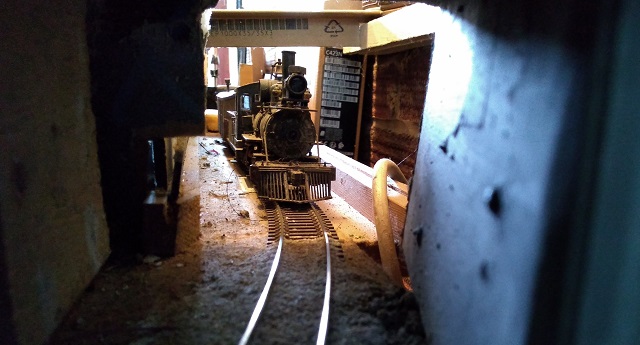
Loco 7, to work train 2, San Fernandez staging track.

Railcar 26, to work trains 3 and 4, Grande loco shed (plus vans from goods shed).

Railbus 31 and trailer, to work trains 5 and 6, Grande carriage shed.

Loco 19, to work trains 7 and 8, Perejil staging track.
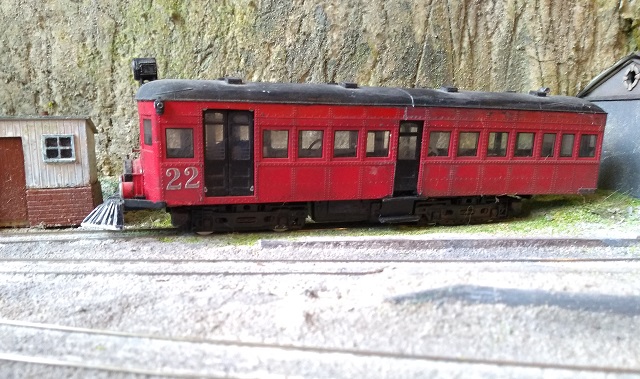
Railcar 22, to work trains 51 and 52, Cuarto de Pulgada station siding.
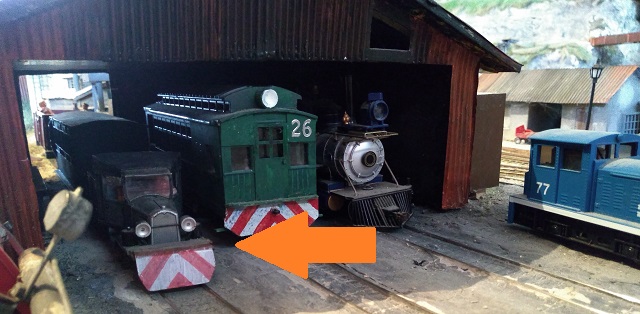
Railcar 20 and trailer, to work trains 53 and 54, Grande loco shed.
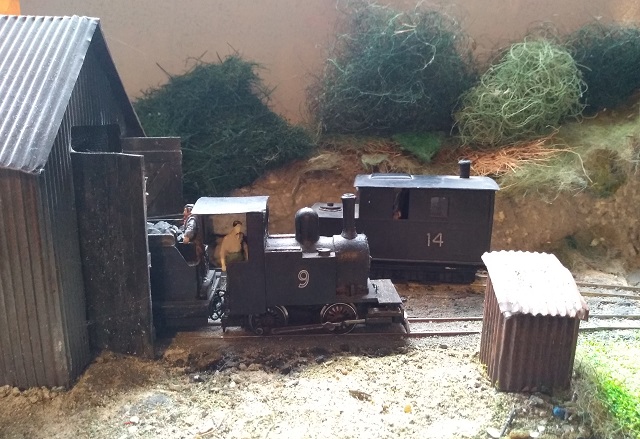
Loco 9 or 14, to work trains 55 and 56, Cuarto loco shed (plus hoppers from the mine).

Railbuses 36 and 37, to work trains 101 and 102, Cuarto holding siding.
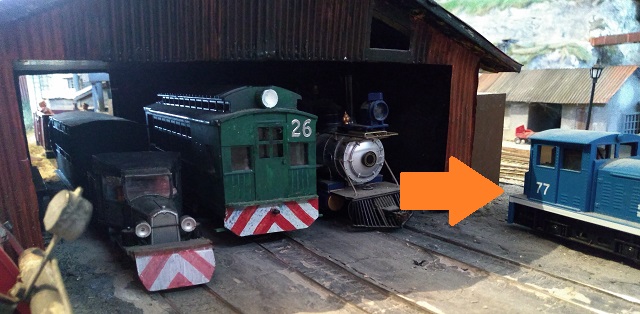
Loco 77, Grande station pilot.

Spare railcars, 38 and 305.
~ ~ ~ ~ ~ ~ ~
The Derrotado and Esquina del Fuego layouts are not included in the timetable diagram but they may be operated at will. Railcar 310 has been assigned to Derrotado for the April ops session, everything else on the two small layouts is puppet rod powered.
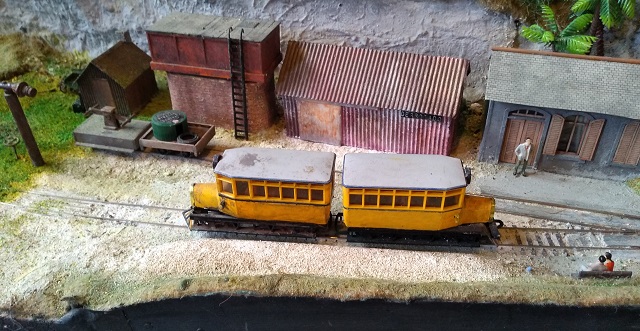
Scania set, Derrotado branch passenger train.

Alternative stock for the Derrotado branch.

Drewry Car and other assorted other puppetry for use at Esquina del Fuego.
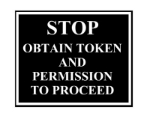



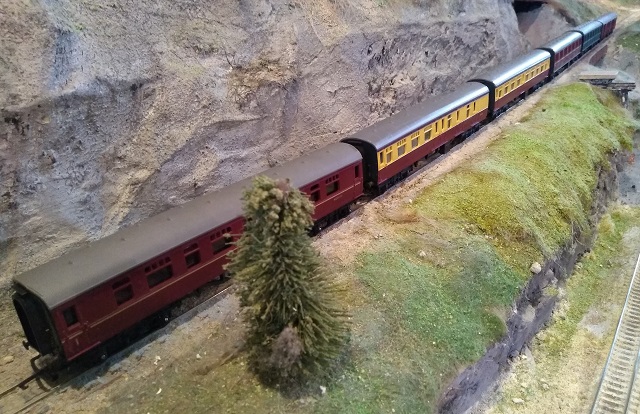


























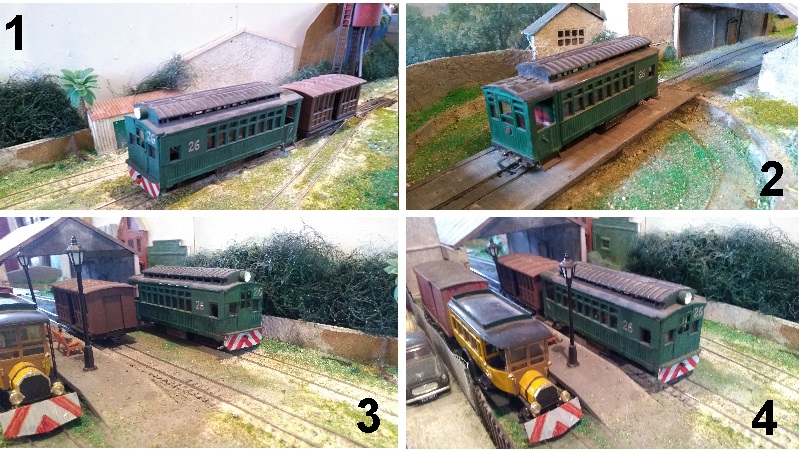
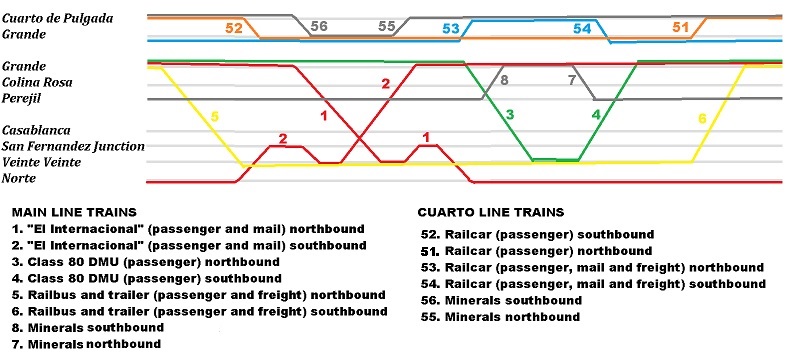




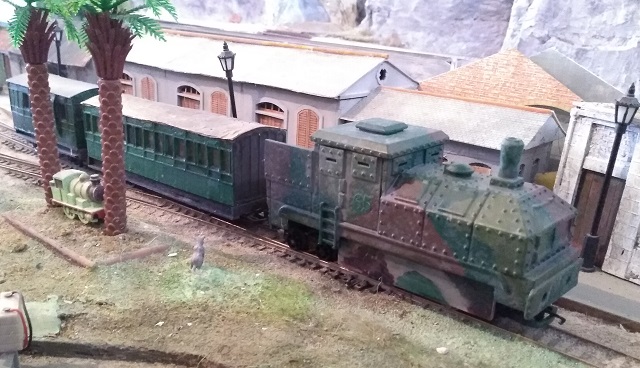
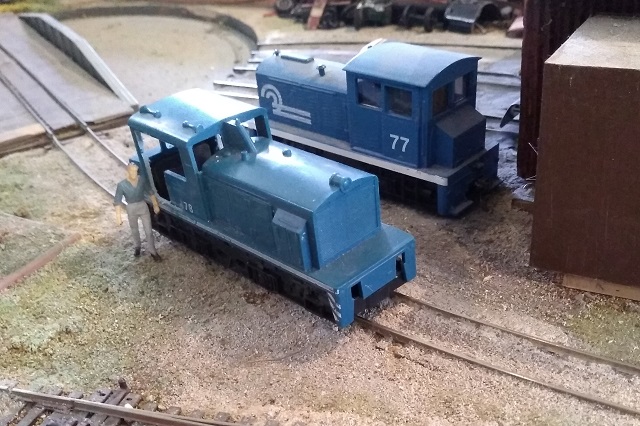
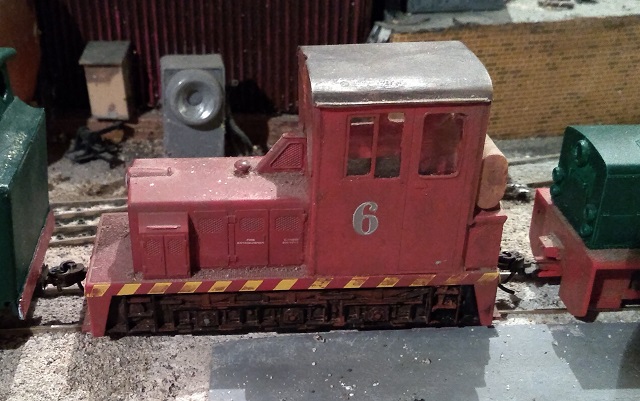



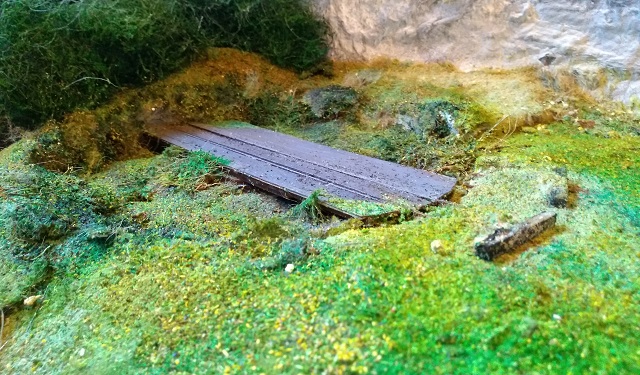









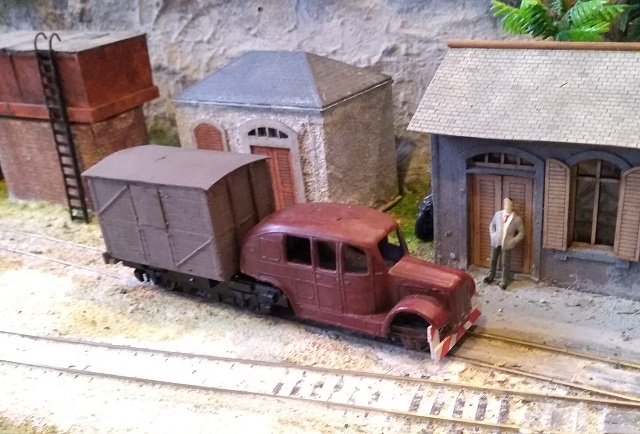
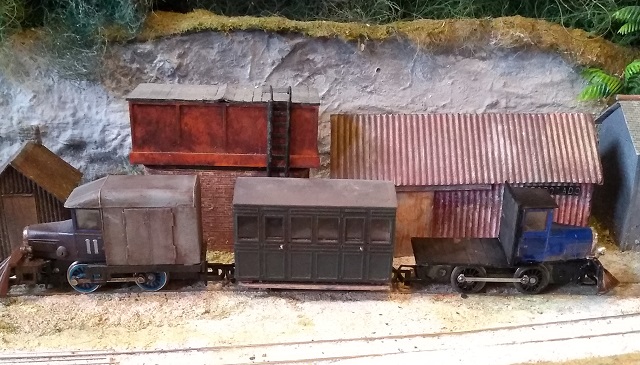







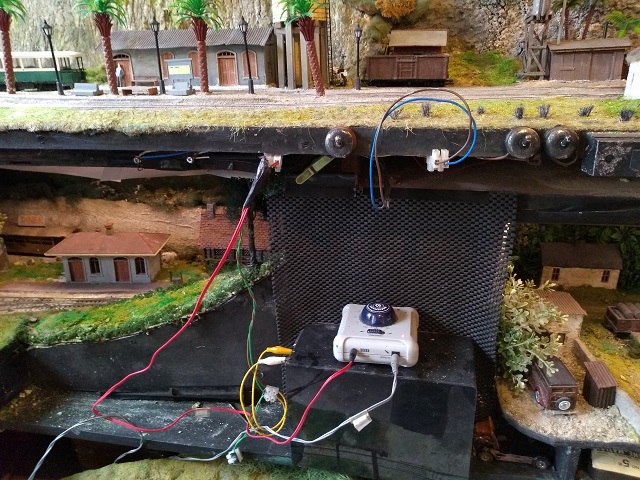
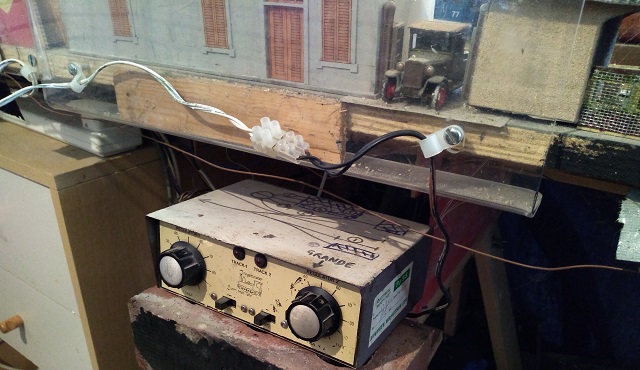
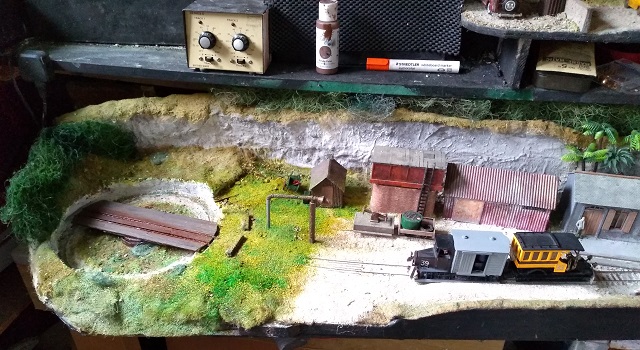



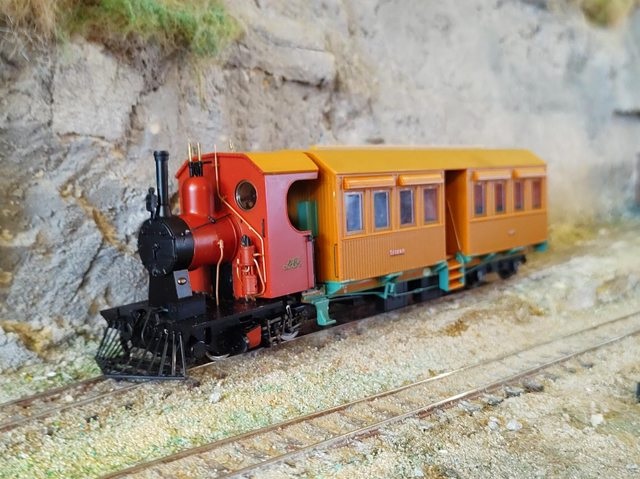

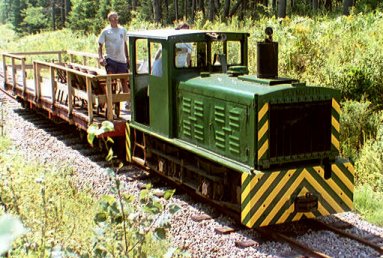


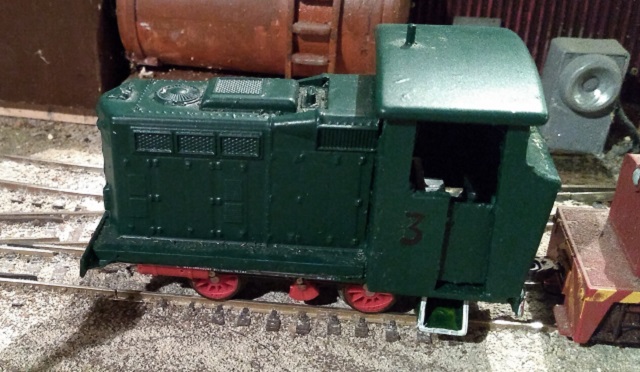











You must be logged in to post a comment.